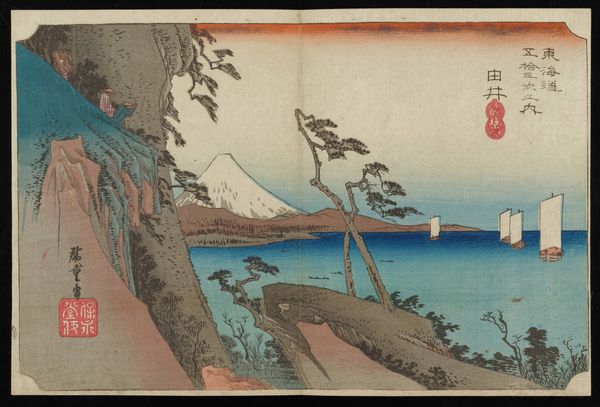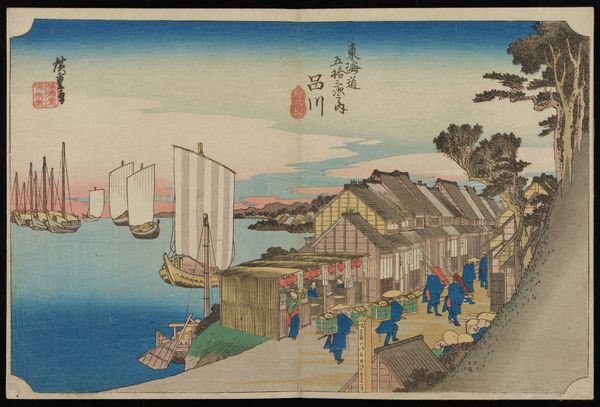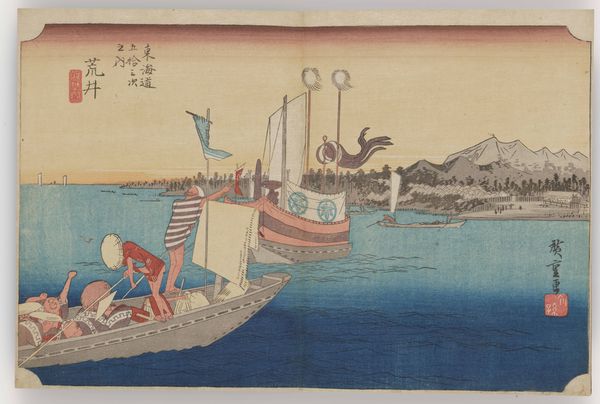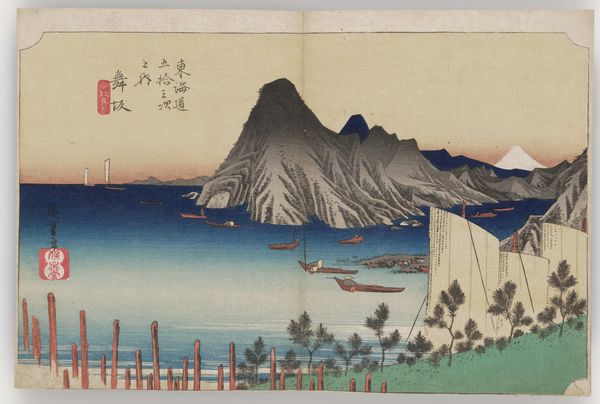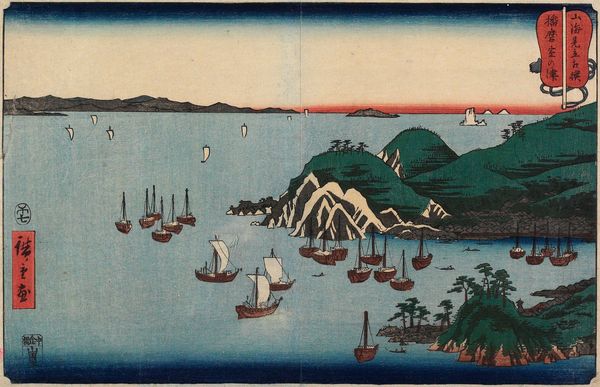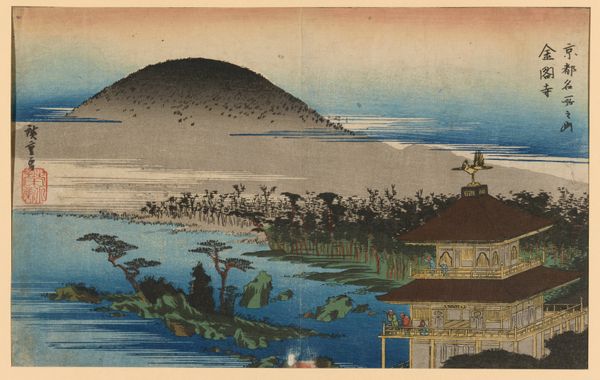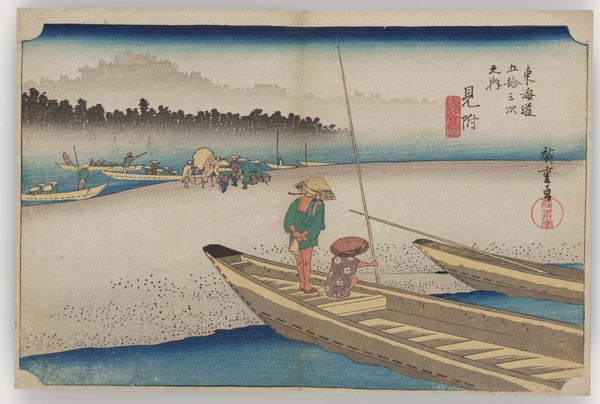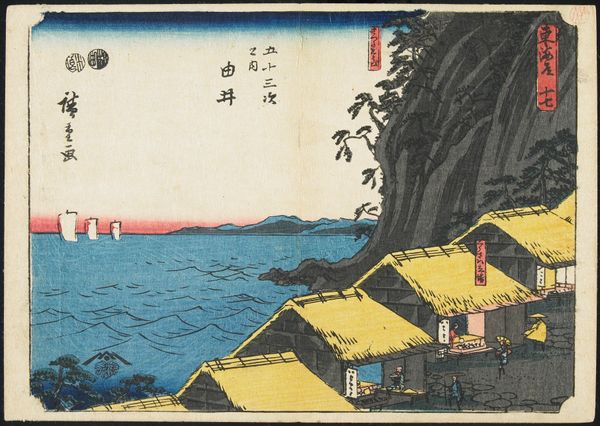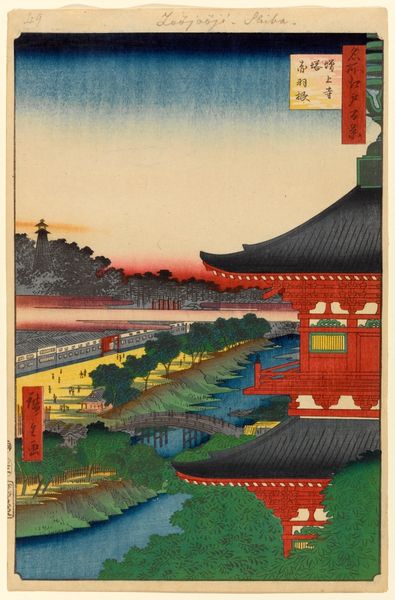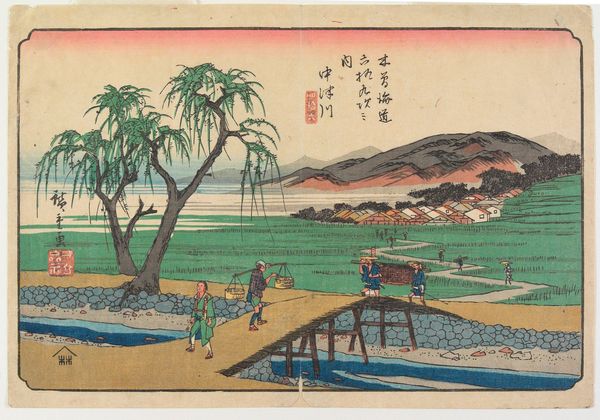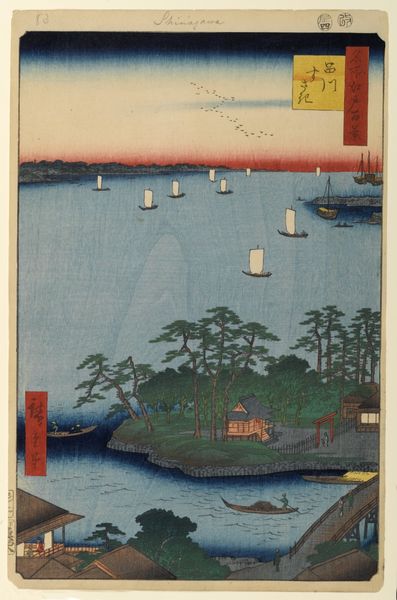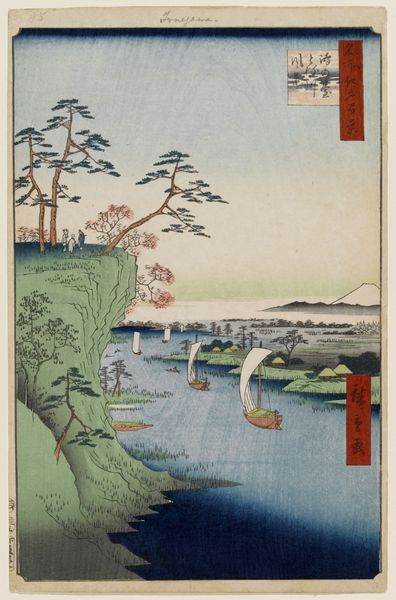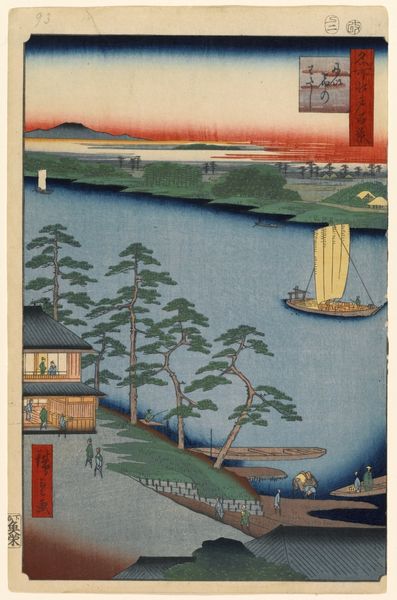
print, ink, woodblock-print
# print
#
asian-art
#
landscape
#
ukiyo-e
#
ink
#
woodblock-print
Dimensions: 9 1/2 × 14 1/4 in. (24.13 × 36.2 cm) (sheet, horizontal ōban)
Copyright: Public Domain
Curator: Here we have Utagawa Hiroshige’s “Kanagawa - View of the Embankment,” a woodblock print created around 1832-1833, part of his series *Fifty-three Stations of the Tōkaidō*. Editor: My initial impression is one of bustling activity contained within this beautifully rendered landscape. The rhythmic lines of the boats, the steep embankment, it suggests a concentrated hub of commerce. Curator: Indeed. The series, and therefore this print, speaks directly to the flourishing trade and transportation networks of the Edo period. Consider the technique of *ukiyo-e* itself: it’s inherently a process of democratization of images. The labor and the woodblocks allowed prints to circulate widely, bringing views of daily life and celebrated landscapes to a wider audience. Editor: And what is particularly fascinating to me is the way the embankment acts as a bridge between the land and the water, life and journey, symbolized by these workers bustling by and boats. Curator: Precisely, there’s a tension created. What is compelling is how this particular work gives insight into the lives of everyday people through the imagery he is presenting. It serves not only as a depiction of this area in this time period, but a portrait of this location itself. Editor: And that concentration of people on the right is visually counterbalanced by the open expanse of the water and sky on the left. The arrangement reminds me how significant water travel was and it ties nicely into your point about industry. Curator: Absolutely. Also look closely at the colors. While muted, the red in the buildings really stand out drawing a connection of location. The labor invested in this technique mirrors the physical labor represented within the image, a true alignment between production and depiction. Editor: A fantastic observation that helps reinforce the artistic message. The symbolic weight, it evokes a sense of the journey of lives interconnected within a wider geographical reality. Curator: It's remarkable to think about how these prints circulated, shaping perceptions of Japan and its landscapes both domestically and, eventually, internationally. Editor: Definitely, I see the way cultural identity of this region shines throughout all of its artistic characteristics. Curator: Well said, a thoughtful reflection. Editor: Indeed, fascinating work to consider.
